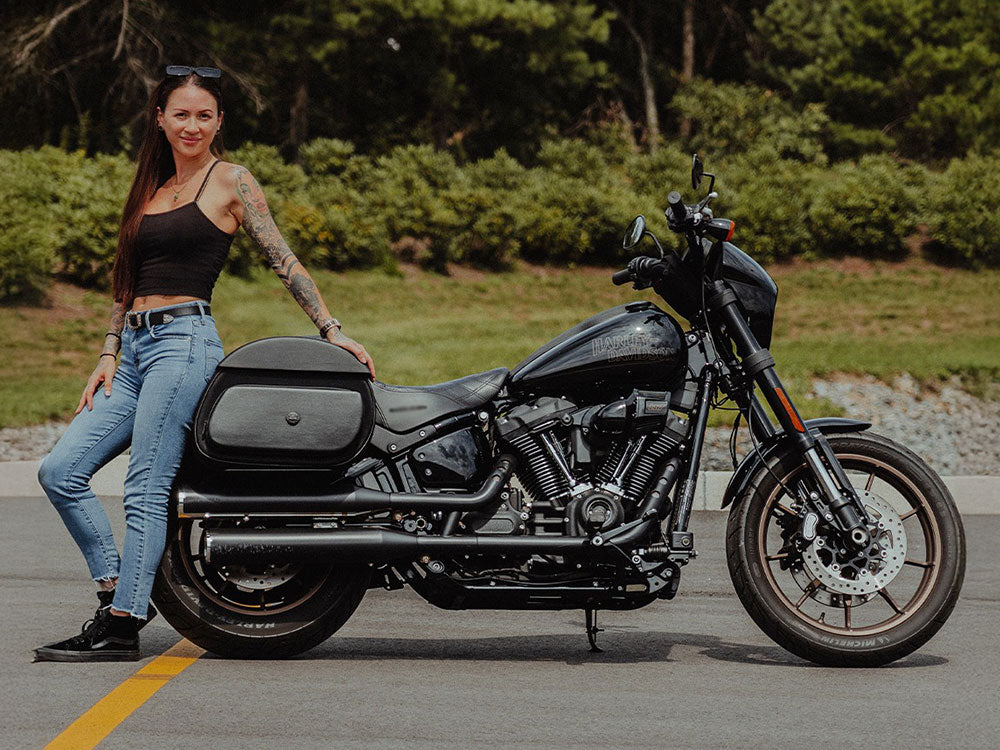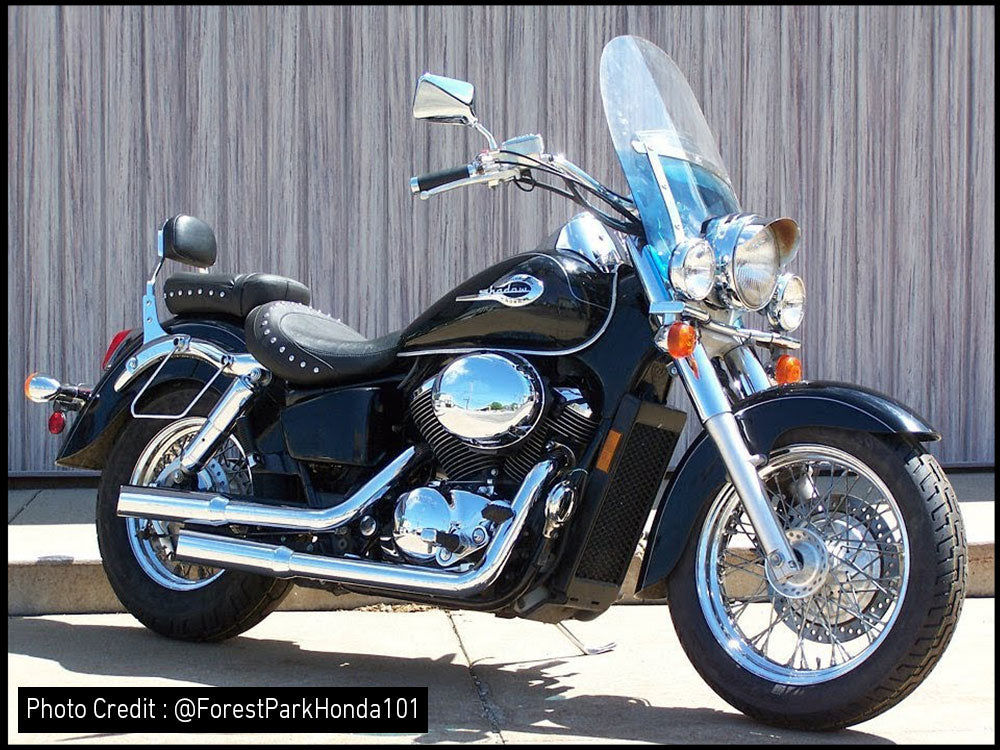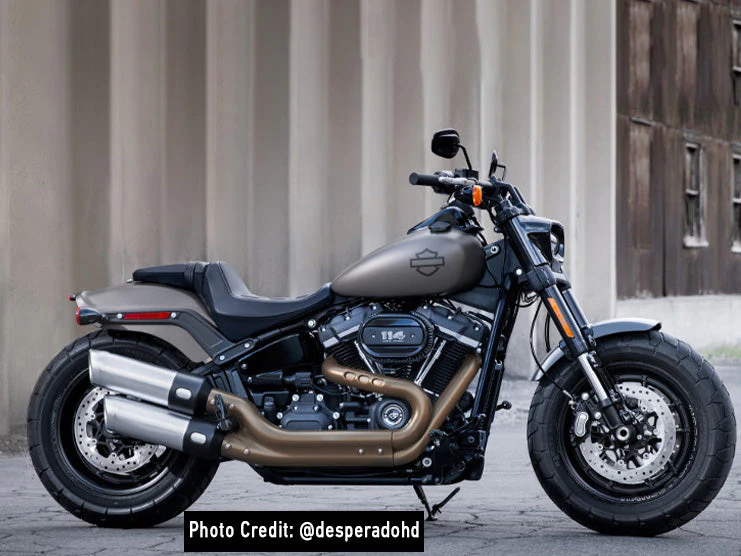Do you know the old-timers' good-old-days talk about when muscle cars ruled the roads? One of those stories that always intrigued us was about Tascam Ford, who designed the Ford Cobra Jet, a factory-built drag car. They simply used the stock of Ford parts and specially ordered their own combination.
Harley-Davidson appears to have drawn inspiration for the Low Rider S from this incident. From the engine to the specifically acquired wrinkle black finish, to the "premium ride" front and rear suspension—even the wheels—all the key extras are actual part numbers in the Harley catalog. The seat is the single feature unique to the Low Rider S. The rest of its parts can be found in the accessories catalog or in other models.
In this article, we will be discussing the detailed specifications, background, performance, and much more of the Harley-Davidson Softail Low Rider S.
Table of Content
1. A Brief History of the Harley-Davidson Softail Low Rider S
It became a sales success when first introduced in 1977 as the FXS Low Rider, with boating alloy wheels, a twin-disc front brake, and a low 26-inch seat height. Then, in 1993, the Harley-Davidson Low Rider transitioned to the new Dyna platform as the DXDL, furthering its cult-like following.
Designed by Willie G. Davidson, the grandson of co-founder William A. Davidson, to achieve a lighter appearance and a lower seat height, the bike drew on parts from other existing models. T Lower suspension, front controls, a black engine, short drag bars, a stepped seat, and a 2-into-1 exhaust were all features of the Low Rider. They developed a dazzling new aesthetic that became an instant classic when they were skillfully blended. In the year it was released, it outsold every other Harley-Davidson motorcycle.
Even though the new 1340cc (80ci) engine was available on FLH models in the first year of the Lowrider's production, the manufacturer wisely chose to equip the new model with the tried and reliable 1200cc (74ci) engine. For the first two years, the FXS was powered by a 1200cc shovelhead engine that produced 60 horsepower and the wide variety of torque that all Harleys are known for. These larger 1340cc higher compression shovelhead motors were installed across the FX range in 1979, with the extra capacity good for 65hp when bog standard. A free-flowing exhaust and a high flow air cleaner would see that figure increase by another 10 hp with a corresponding jump in torque output.
The Lowrider has the lowest seating position of any bike in the HD line-up at a bee's dick under 26" from the road to your arse. This is fantastic for anyone with a shorter inseam or, in fact, anyone who's looking for that low-slung factory custom ride. The Lowrider also had a unique factory steering head with an angle of 32 degrees to give it that custom-raked frame look, right up until the 2006 model when it reverted back to the standard 29-degree super glide frame.
The rubber-mounted FXR chassis was introduced in the 1980s to replace H-aging D's solid-mounted FX series. Naturally, the Low Rider was included in the new model line, with the FXRS model proving to be a popular choice once again. Dual disc brakes, a pop-up seat for quick battery access, and low-rise bars adorned this Low Rider. With the move to the FXR chassis in 1984 came a more significant development of the 1340cc Evolution engine, though the Evo was only available for 1984 on new Softails and FXRs.
The Evo was introduced over the full model line in 1985, and it was the shovelhead's final year. Only police motorcycles were equipped with the latest shovels.
Harley was plagued throughout the seventies by poor quality control. A bad situation emerges as a result of low employee morale and a parent business (AMF) that specialised in sporting equipment rather than motorbikes. Shovelhead engine versions built between 1970 and 1982 are still known for being unreliable, delicate, and leaky. Thankfully, by 1983, a group led by Willie G. Davidson had purchased the company, and the tide had begun to turn.
When the latest Softail platform was introduced in 2017, it had the knock-down effect of axing the Harley-Davidson Dyna line-up, causing mild hysteria from devotees of the twin-shock Dyna. The new Low Rider, now folded into the Softail platform, was seen by some as an imposter. The resale value of the Dyna Low Rider Ss increased despite the fact that the Softail version was a better motorcycle in every dynamic aspect.
2. Harley-Davidson Softail Low Rider S at First Glance

The bike's early rumblings led me to believe it would be nothing more than a Dyna with a large motor. Isn't that a big deal? There's a lot more to it.
The Low Rider S is a cruiser built for riders that want unapologetic power and are prepared to push their bike to its limits. The Milwaukee-Eight 117 engine provides 5% more torque than the Milwaukee-Eight 114 engine found in the 2021 Low Rider S model, giving its owner instant bragging rights. Suspension with premium components improves the riding experience. This bike comes with the enormous attitude of West Coast style and relentless performance that was previously only possible with a large investment in accessories.
The new Low Rider S offers a long list of features that appear to address each issue separately. The new handlebar-mounted combo analog tachometer/digital speedometer on the 2022 Low Rider S model replaces the tank console instruments on earlier Low Rider S models. The gauge is closer to the rider's line of sight because it is mounted on the handlebar. The gasoline tank is now topped by a low-profile textured black tank console with an FXLRS badge. A distinctive LED headlight and LED tail/brake lights to deliver exceptional lighting performance.
The Low Rider S model gets the same taller rear monoshock as the Low Rider ST model for improved riding comfort and 1.3 degrees leaner angle than the previous Low Rider S model for increased ground clearance and rider confidence during aggressive cornering. The rider can maintain ideal suspension performance for the current load and road conditions with under-seat hydraulic pre-load adjustment.
The front end is stiffened by a 43mm inverted fork with single-cartridge internal technology for the rapid braking expected by aggressive riders, with standard ABS (antilock braking system) for assured braking performance in less-than-ideal conditions. Michelin Scorcher 31 tires provide a smoother ride and improved handling.
These fundamental West Coast styling aspects are among the other features. A deep solo seat, mid-mount foot controls, and a color-matched tiny speed screen fairing that frames the headlamp and blocks the wind when chasing down the motorway. The motorcycle's blacked-out powerplant, front end, and exhaust are contrasted with Radiate cast-aluminum wheels (19-inch front and 16-inch rear diameter) coated in Matte Dark Bronze.
3. Harley-Davidson Softail Low Rider S: A Buyer’s Guide
3.1 What Does S Denote in Low Rider S?
For motorcycle enthusiasts, the “S” in the Low Rider S denotes “supercool” that how versatile and perfect this bike is. However, unlike other Harley-Davidson motorcycles, this one also has a name with the meaning covey. The company didn’t reveal the specific term for it, therefore, the riders assume that the “S” in the Low Rider S denotes Sport, Special, Super, and Sexy.
3.2 What is the Difference Between Harley Low Rider and Low Rider S?
The basic Harley Low Rider Softail is slower and less sporty than the Low Rider S version. Though the Low Rider has a 107 engine that produces less power than the Milwaukee-Eight 114 engine installed in the Low Rider S. Whereas, the Harley-Davidson Softail Low Rider S has much power and torque, a better braking system, and a shock absorber.
3.3 Does Harley-Davidson Still Make the Low Rider S?
The answer is an absolute Yes! The 2022 Harley Low Rider S Softail gets chassis updates and an engine update to make it the sportiest Low Rider yet. The 679-lb motorcycle is hurried along with a new Milwaukee-Eight 117 engine that produces 125 ft-lb of torque at 3500 rpm, which is enough to make it better than any other Harley-Davidson cruiser motorcycle.
4. Harley-Davidson Softail Low Rider S Specifications
4.1 Dimensions
| Length | 2,365 mm |
| Seat Height, Unladen | 710 mm |
| Ground Clearance | 145 mm |
| Rake | 28 |
| Trail | 145 mm |
| Wheelbase | 1,615 mm |
| Front Tire Specification | 110/90B19,62H, BW |
| Rear Tire Specification | 180/70B16,77H, BW |
| Tire, Type | Michelin™ Scorcher™ “31” front and rear |
| Fuel Capacity | 18.9 l |
| Oil Capacity (W/Filter) | 4.7 l |
| Weight, As Shipped | 295 kg |
| Weight, In Running Order | 308 kg |
4.2 Engine Specs
| Engine | Milwaukee-Eight™ 117 |
| Bore | 103.5 mm |
| Stroke | 114.3 mm |
| Displacement | 1,923 cc |
| Compression Ratio | 10.2:1 |
| Fuel System | Electronic Sequential Port Fuel Injection (ESPFI) |
| Exhaust | 2-into-2 offset shotgun; catalyst in muffler |
4.3 Performance
| Engine Torque Testing Method | EC 134/2014 |
| Engine Torque | 168 Nm |
| Engine Torque (RPM) | 3500 |
| Horsepower | 105 HP / 78 kW @ 5020 rpm |
| Lean Angle, Right (DEG.) | 30 |
| Lean Angle, Left (DEG.) | 30 |
| Fuel Economy Testing Method | EU 134/2014 |
| Fuel Economy | 5.5 l/100 km |
4.4 Chassis
| Front Fork | Single cartridge 43 mm inverted with aluminum fork triple clamps; triple rate spring |
| Rear Shocks | Hidden, free piston, coil-over monoshock; 56 mm stroke; hydraulic preload adjustment |
| Wheels, Front Type | Dark bronze, Radiate cast aluminum wheel |
| Wheels, Rear Type | Dark bronze, Radiate cast aluminum wheel |
| Brakes, Type | Front and rear black, Split 7-spoke floating rotors |
| Brakes, Caliper Type | 4-piston fixed front and 2-piston floating rear |
4.5 Drive Train
| Primary Drive | Chain, 34/46 ratio |
| Gear Ratios (Overall) 1st | 9.311 |
| Gear Ratios (Overall) 2nd | 6.454 |
| Gear Ratios (Overall) 3rd | 4.793 |
| Gear Ratios (Overall) 4th | 3.882 |
| Gear Ratios (Overall) 5th | 3.307 |
| Gear Ratios (Overall) 6th | 2.79 |
4.6 Electric
| Gauges | 4-inch analog tachometer with digital speedometer, gear, odometer, fuel level, clock, trip, and range indication |
| Light (As Per Country Regulation), Indicator Lamps | All LED, low beam, high beam, and signature position lamp headlamp; LED Zeppelin Tail/Stop; Incandescent bullet turn signals |
5. Aftermarket Parts and Luggage Options for Harley-Davidson Low Rider S
Although, the Harley-Davidson Low Rider S is a modern and stylish bike that stands first for almost every beginner rider. However, that doesn’t the Low Rider Softail a beginner bike specifically, advance riders also love to possess this bike to make their Harley collection complete.
Therefore, if you don’t like the stock Low Riders S Softail, you should know that there are a lot of aftermarket parts and options available that can give your bike a completely different and customized look.
Moreover, there are many motorcycle luggage bags options available in the market, that could give you a new way of styling and will also allow you to carry your stuff conveniently while riding around the boulevard.













Leave a comment
All comments are moderated before being published.
This site is protected by hCaptcha and the hCaptcha Privacy Policy and Terms of Service apply.